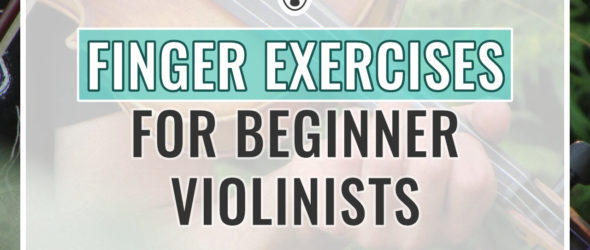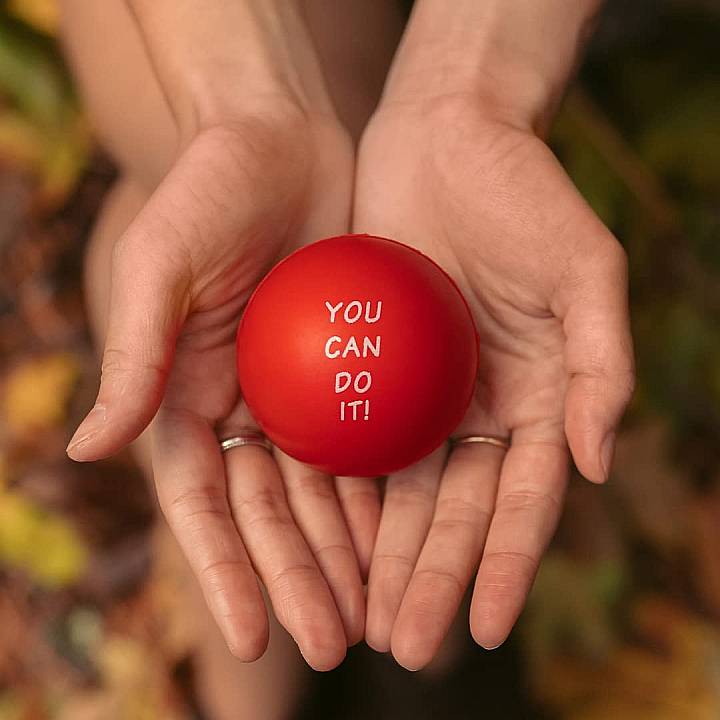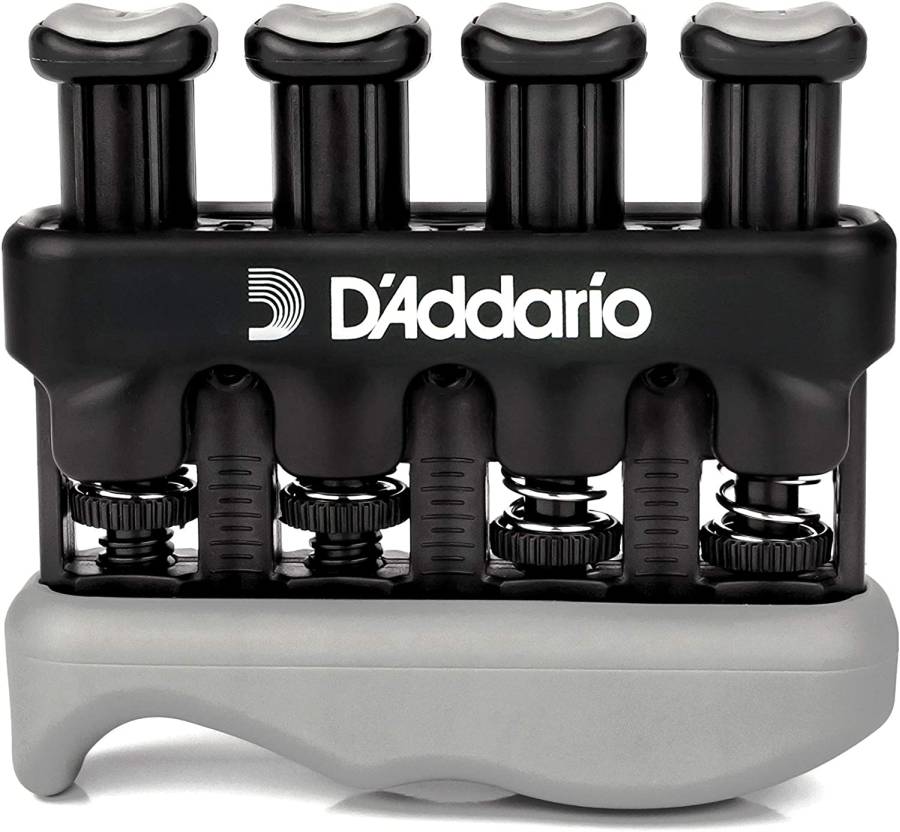Today I’m sharing with you violin finger exercises for beginners to help strengthen your muscles and improve your progress, even as a beginner.
If you’ve just recently started learning to play the violin, you might think your hands are too stiff. They may not move fast enough, or in the right ways. The violin exercises I’m sharing today will help mobilize your fingers and strengthen them to play quicker, more accurate notes.
We’ll focus on each hand separately, then both hands. It’s important to work on both hands, to improve placing the notes on the fingerboard, and to get better at guiding the bow for any bow stroke you play. It’s also a great workout for your brain!
Make sure to download your finger exercises checklist to track your progress:
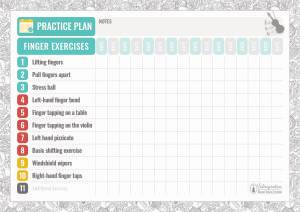
Finger Exercises for Beginners
Improve Your Fingers Strength
Why Do We Need to Do Finger Exercises?
We need to do finger exercises because playing the violin requires a lot of strength and dexterity in both hands, but especially in the left hand to accurately stop the notes on the fingerboard. Just practicing the violin will help you build up finger strength, but to see quicker results, try the finger exercises a few times a week.
You’ll find you can play the violin faster and more precisely! The exercises (see below) will also help increase your endurance and stamina when playing the violin.
The nice thing about a lot of these violin exercises is that you can practice them anywhere. You don’t need to be around your instrument to work on them!
How Do I Strengthen My Fingers for the Violin?
The following finger exercises can help improve your hand strength for playing the violin. Even though I’m sharing many exercise ideas today, please only try a few each time you want to exercise your hands.
Finger Exercises for Both Hands
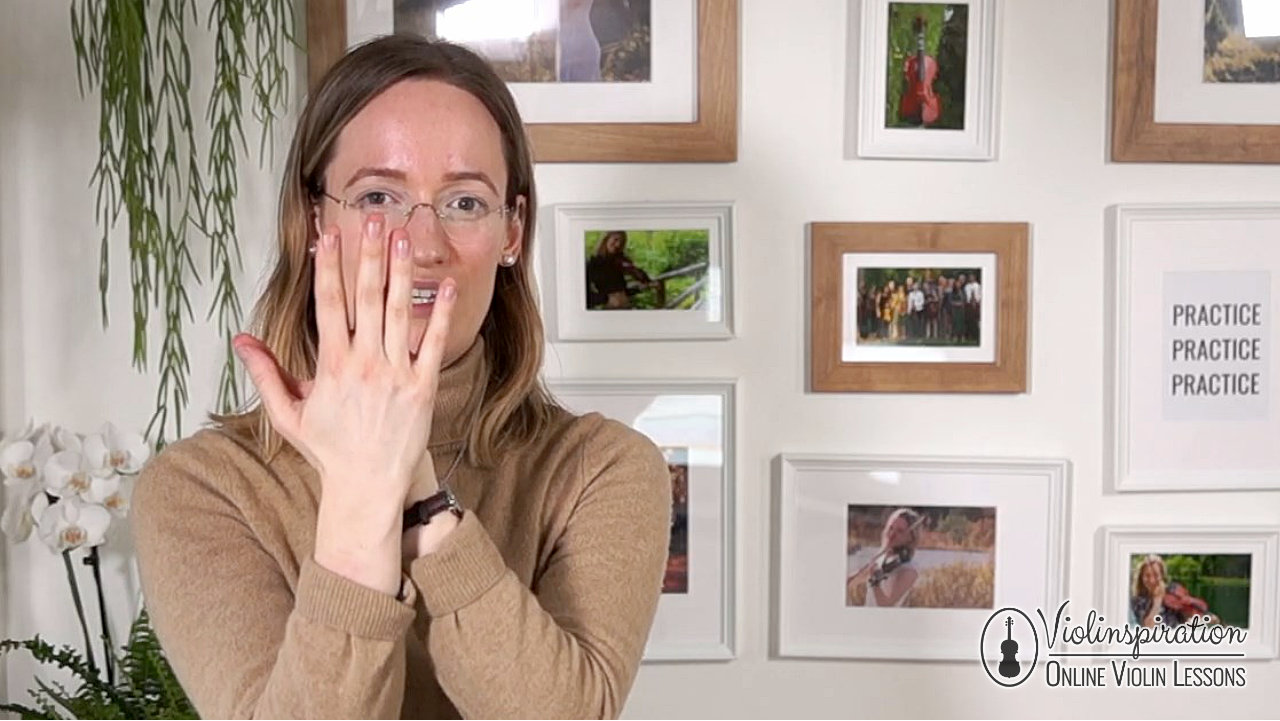
First, let’s go over exercises that are good for both hands. You may notice an improvement in your left-hand accuracy after practicing these exercises, but they’ll also help your right hand! Try to keep most exercises symmetrical.
Lifting fingers
For our first exercise, place both hands and forearms on a flat surface. Lift both of each finger, one at a time.
So, try lifting each index finger, then both middle fingers, then both ring fingers, then both fourth fingers. After that, try alternating the order. This also helps your brain solidify the movements and fingers you need to move when you’re actually playing your string instrument.
Pull fingers apart
Very similar to the last exercise, place your palms flat together in front of you, like for praying or a namaste yoga position, and peel each corresponding finger away from the other, one by one.
It can also be helpful to spread your fingers out wide, to get them accustomed to stretching on both the fingerboard and the bow.
Stress ball
If you have a stress ball, or a small squishy ball that fits in the palm of your hand, practice squeezing and releasing it in both hands, one at a time. This is important for left-hand finger strength, and also to practice releasing the muscles in both hands. Playing without tension is very important, and it’s something a lot of us need to continually work on.
Using a stress ball can help strengthen muscles, and it’s a great exercise to help anyone struggling with overuse injuries.
As an alternative to a stress ball, you can use Varigrip by D’Addario and practice squeezing the whole hand or pressing one, two, or three fingers at once.
Exercises for Left Hand
Left-hand finger bend
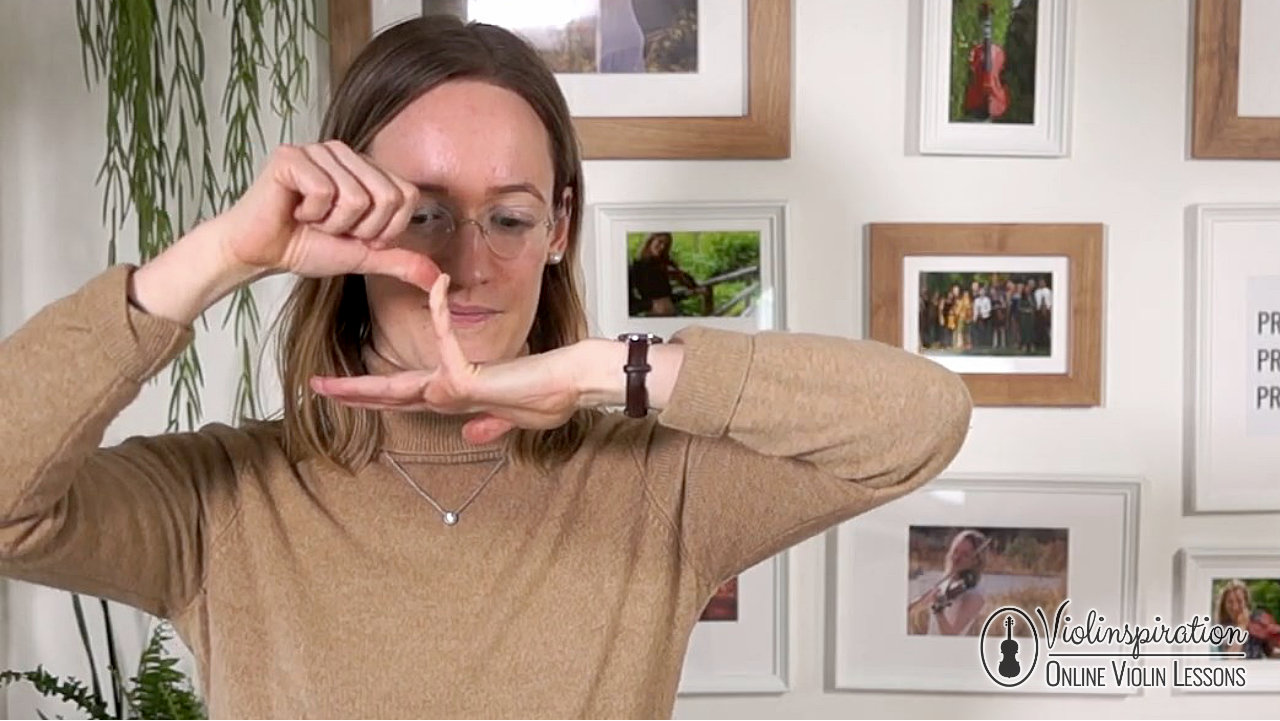
Lay your left hand palm-down on a flat surface. Pull your left-hand fingers up by your base knuckle and towards your wrist one at a time with your right hand, just until you feel a stretch. There shouldn’t be any discomfort.
This exercise will help develop a bigger range of motion. You might notice that you have more power when placing down notes on the fingerboard.
Finger tapping on a table
This is an easy but helpful movement to practice for a beginner violinist: try tapping your fingers on a flat surface like you would play piano. Try one finger at a time, in order, then different patterns. You can even try to play your favorite songs like this!
Test these patterns first: 1-2-3-4, then 3-2-4-1, and then 1-3-2-4.
Finger tapping on the violin
Hold all four fingers down on the fingerboard, and lift/tap one finger at a time. First, work your way up, 1-2-3-4, then work your way down, 4-3-2-1. Don’t worry about playing with your bow–right hand can just relax during this drill!
While your fingers are sitting on the string, stay loose and free of tension. This is hard to do, but go slowly. Give yourself enough time to think and execute exactly what you intend to do.
After you’ve mastered the basics (stepping up and down) try alternating your tapping fingers: keep the second finger and fourth finger down while you alternate tapping the first and third fingers. Try different combinations like this. It’s tricky, isn’t it?!
Extra practice for 4th finger
Let’s adapt the previous exercise to focus on the fourth finger. Keep at least a second finger and third finger on the fingerboard, and try tapping your fourth finger on the fingerboard repeatedly.
If you’re new to playing with the fourth finger, don’t spend too long on this exercise. You might notice your pinky finger gets tired quickly. That’s okay! Practice this exercise often, but in very short bursts. You’ll build up the muscles quickly.
Left hand pizzicato
A good way to strengthen the third finger is to play pizzicato with the left hand.
Left-hand pizzicato is normally played using only the third and fourth fingers, and it requires a lot of control to get these two fingers in particular to grab just the one string you’re intending to pluck.
Make a pattern by plucking open strings, playing simple melodic songs, or introducing left-hand pizzicato if open strings appear in the music you’re working on already.
Basic shifting exercise
Shifting to a different position is a great way to release tension. If you’re new to playing outside of the first position, now is a great time to learn how to shift!
Check out The Essential Violin Exercises for Smooth Shifting for a complete overview of this important technique.
You can start with this exercise: on any open string, play 1-2-3-1. Then, shift up to the third position and play the first finger. Come back to the first position and play 3-2-1-2-1.
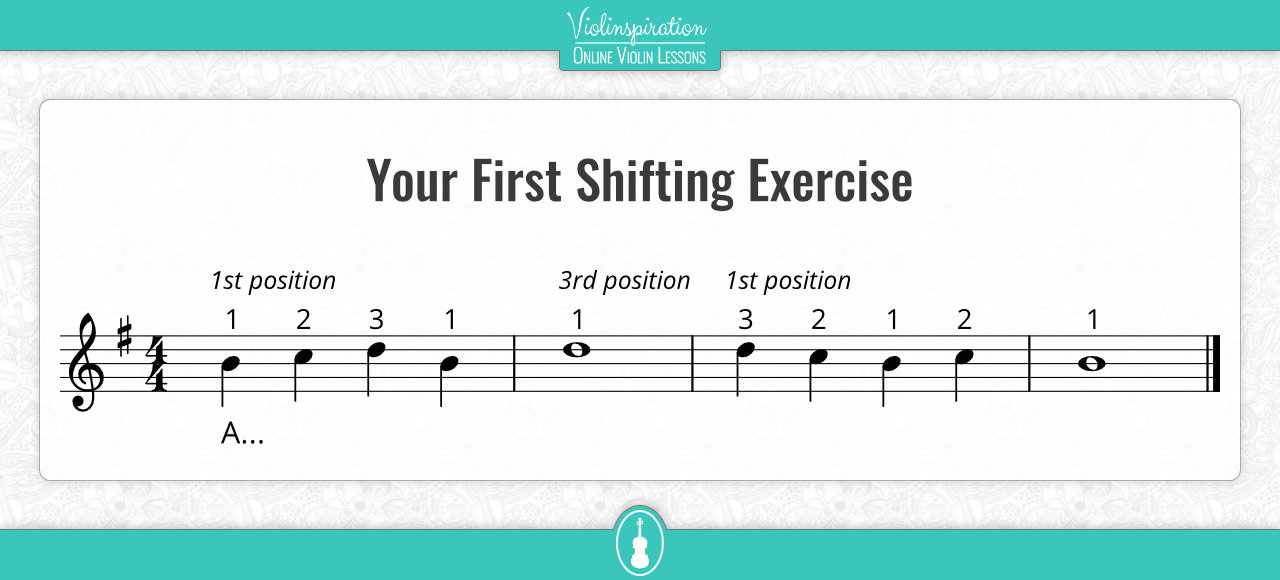
How relaxed is your hand? Practice each note slowly, with no tension.
Right-Hand Exercises – Don’t Forget About the Bow!
Strengthening the muscles and finger dexterity in your right hand will help you advance your bow technique. With stronger muscles, you might be able to learn a new bow stroke or play with your bow straight.
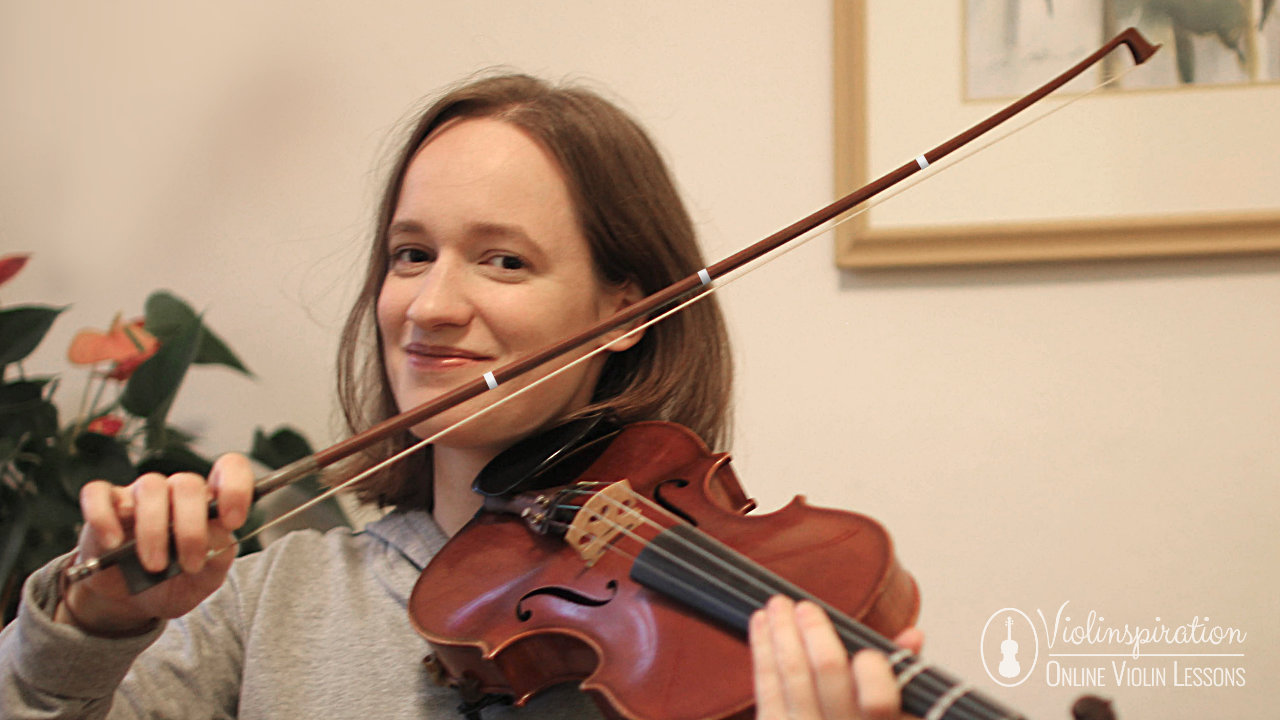
Windshield Wipers
Practicing “windshield wipers” can help strengthen the third and fourth fingers in your right hand.
When you’re playing, sometimes your right pinky will feel like it’s not doing anything at all, and other times, it’ll carry the full weight of the frog!
To practice windshield wipers, hold your bow as you would while playing, and tilt your wrist from right to left. The bow will move just like a windshield wiper!
Right-hand finger taps
Finger taps – hold a pencil like a bow, and tap one finger at a time on the pencil. This promotes finger strength and independence, which will lead to smoother, more connected bow strokes. You can practice this one anywhere!
FAQ
I hope I can answer all the questions you have about beginner finger exercises, but if you do have a question I don’t cover, please leave it in the comments!
How do you loosen your fingers for the violin?
A great way to loosen your fingers to play the violin is by placing your left forearm on a flat surface and gently pulling up on each finger, one at a time, with your other hand. Only bend each finger enough to feel a gentle stretch. You don’t want to feel any discomfort.
How do I strengthen my fingers for the violin?
You can strengthen your fingers for playing the violin by using a stress ball, practicing left-hand pizzicato, executing tapping exercises with both hands (tapping a flat surface, fingerboard, or pencil), and practicing shifting.
How do you strengthen your pinky for violin?
You can strengthen your pinky finger for playing the violin by doing tapping exercises. Try placing the fourth finger repeatedly, more than you practice placing the other fingers.
The fourth finger is our weakest finger, and using it independently is difficult. You’ll probably need to spend some extra time working to strengthen the fourth finger, but that’s okay!
How do you increase finger speed on a violin?
A great way to increase finger speed on the violin is by practicing finger pattern drills. Try building up your left-hand fingers (1-2-3-4) by placing and tapping them each on the fingerboard, one by one. Then change up the order that you place and tap again. Start slowly, then speed it up by using a metronome.
Conclusion
Begin practicing these violin finger exercises for beginners now to start seeing a boost in your finger strength!
It’s important for violinists of all levels to warm up their fingers to boost their playing, but it’s especially helpful when you’re first starting to learn the violin. Your fingers are doing something entirely new, and your muscles just aren’t used to it. Getting started with these finger strength routines will help you become a better violinist, even at the beginning of your learning journey!
Download here your finger exercises checklist, print it and put it in the place where you usually practice. It will help you remember about doing those exercises regularly.

Finger Exercises for Beginners
Improve Your Fingers Strength
Happy practicing 🙂
